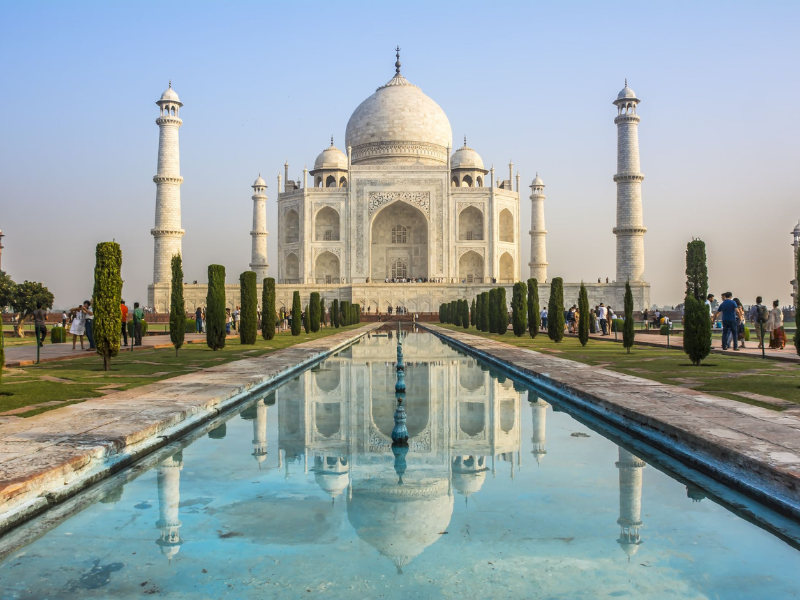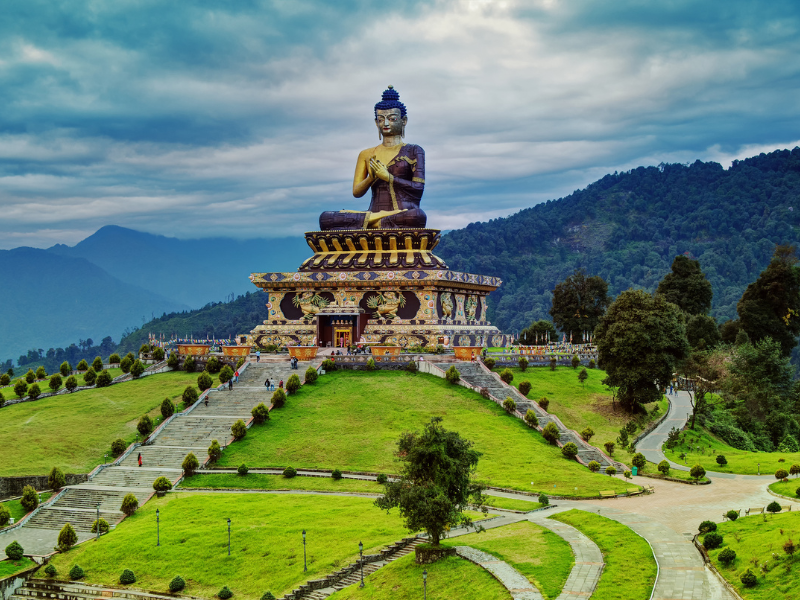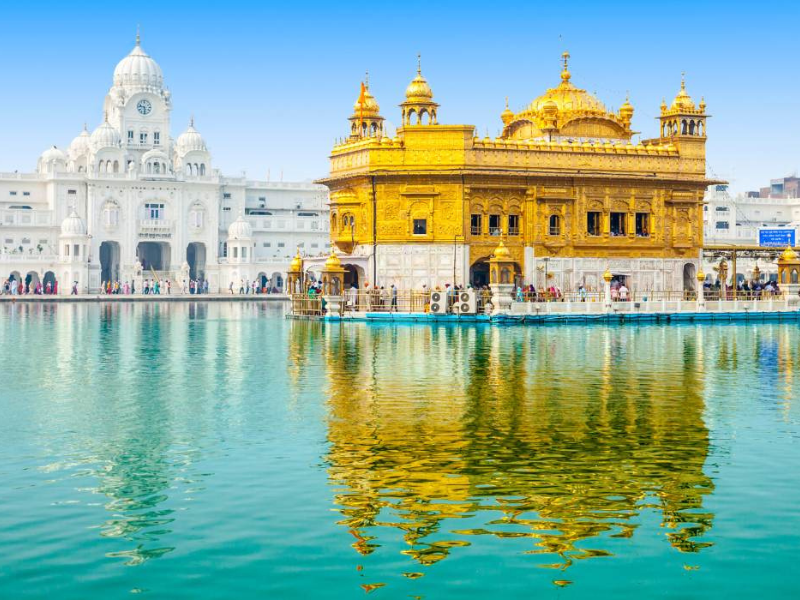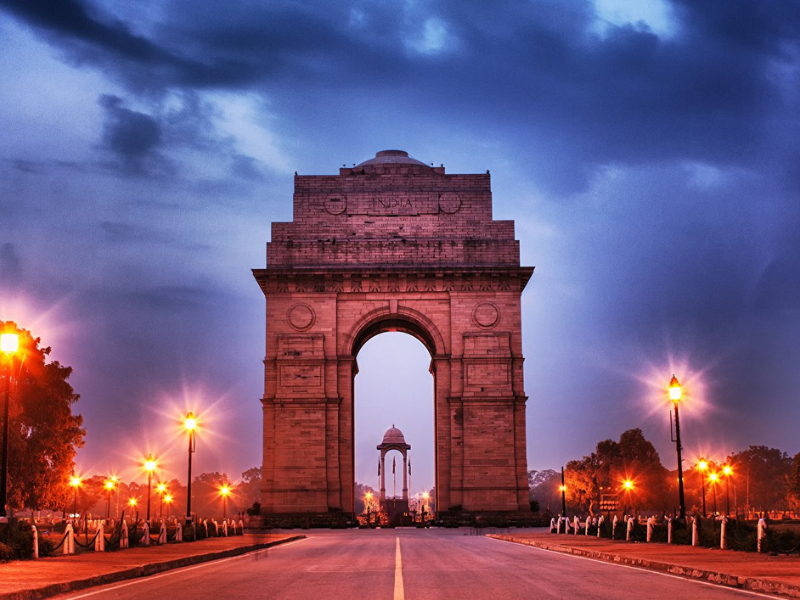
India is a vast land of endless diversity, from its rich history and culture to its ever-changing landscapes. For travelers, it is a treasure trove of experiences, offering everything from bustling cities to serene natural wonders. Whether you’re a culture enthusiast, a foodie, an adventure lover, or someone seeking relaxation, India has something for everyone.
India offers a unique journey through time and space. This travel guide will provide you with everything you need to know to plan the perfect trip, from the top destinations to cultural etiquette and everything in between.
1. Introduction to India
India, officially known as the Republic of India, is the seventh-largest country in the world by land area, spanning over 3.28 million square kilometers. With a population of over 1.4 billion people, it is the second-most populous country in the world. India is located in South Asia and is bordered by Pakistan, China, Nepal, Bhutan, Bangladesh, and Myanmar. It is also surrounded by the Indian Ocean, which provides it with a long coastline of beautiful beaches.
India’s history dates back over 5,000 years and has left a lasting impact on global civilization. Ancient Indian cultures like the Indus Valley Civilization, as well as major empires such as the Maurya and Gupta Empires, helped shape the country’s cultural landscape. Today, India is known for its diversity—whether it’s languages, religions, or landscapes. The country is a mosaic of different cultures, languages, customs, and traditions, offering a variety of experiences for travelers.
2. Planning Your Trip to India
Visa and Entry Requirements
India requires most travelers to obtain a visa before arrival, although citizens from several countries can apply for an e-Visa online. Ensure you apply for the visa well in advance to avoid last-minute issues. The e-Visa process typically takes around 3-5 business days, and you’ll need to upload certain documents, such as a passport-sized photo and passport information. Visa types vary, so choose the one that best suits the purpose of your visit, whether it be for tourism, business, or medical treatment.

Best Time to Visit
The best time to visit India generally falls between October and March. During these months, the weather is more temperate, especially in the northern regions. It is also the ideal time for outdoor activities, trekking, and exploring major tourist attractions. Avoid visiting during the peak summer months (April to June), as temperatures can soar to over 40°C (104°F) in many areas, particularly in Rajasthan and central India. Similarly, the monsoon season (June to September) brings heavy rainfall, especially to the coastal and southern regions, which may disrupt travel plans.
Currency and Payment Methods
India’s official currency is the Indian Rupee (INR). ATMs are widely available, and most hotels, restaurants, and shops in major cities accept credit or debit cards. However, in rural areas and small markets, it’s advisable to carry cash. Travelers should always ensure they have enough cash on hand for incidental expenses, tips, and purchases.
3. Top Tourist Destinations in India
India is a land of endless exploration, from ancient monuments to modern cities, lush forests, and sandy beaches. Let’s explore the best places to visit in India.
New Delhi
New Delhi, the capital of India, is a blend of rich history and modern-day hustle. The city is home to iconic landmarks like the Red Fort, Jama Masjid, Humayun’s Tomb, and Qutub Minar, all of which are UNESCO World Heritage Sites. You can also visit India Gate, a war memorial that honors soldiers who died during World War I. The bustling markets of Chandni Chowk and modern shopping malls in Connaught Place provide an exciting contrast to the historical structures, making Delhi a must-visit destination for all tourists.
Agra
Agra is home to the world-renowned Taj Mahal, one of the Seven Wonders of the World. This beautiful marble structure, built by Mughal Emperor Shah Jahan in memory of his wife Mumtaz Mahal, is an architectural marvel. Apart from the Taj Mahal, Agra is also home to the Agra Fort and Fatehpur Sikri, both of which hold historical significance and are UNESCO-listed. Agra’s vibrant bazaars offer visitors a chance to shop for local handicrafts, including marble inlay work, leather goods, and textiles.
Jaipur
Jaipur, also known as the “Pink City,” is the capital of Rajasthan and is famed for its grand palaces, forts, and vibrant culture. Key attractions include the Amber Fort, City Palace, Hawa Mahal, Jantar Mantar (an astronomical observatory), and the Jal Mahal. Jaipur’s markets are famous for their traditional Rajasthani textiles, jewelry, and handicrafts, making it an excellent place to shop for souvenirs. The city’s grand architecture and rich history offer travelers an immersive cultural experience.

Varanasi
Considered one of the oldest living cities in the world, Varanasi holds immense spiritual significance, especially for Hindus. Located on the banks of the sacred Ganges River, the city is known for its ghats (stepped embankments leading to the river), where pilgrims perform rituals, offer prayers, and take holy dips. The mesmerizing Ganga Aarti ceremony, performed every evening, is a breathtaking spiritual experience. While in Varanasi, also visit the Kashi Vishwanath Temple, one of the holiest Hindu shrines.
Kerala
Located in the southern part of India, Kerala is famous for its tranquil backwaters, lush forests, and pristine beaches. The state is known as “God’s Own Country” for its natural beauty and serenity. Visit the backwaters of Alleppey, explore the tea gardens in Munnar, and unwind at the beaches in Kovalam and Varkala. Kerala also offers rich cultural experiences, such as Kathakali performances and Ayurvedic treatments. It’s an ideal destination for travelers looking for a relaxing and scenic escape.
Goa
Goa is a popular beach destination, famous for its sun, sand, and vibrant nightlife. The state offers a mix of beautiful beaches, historic Portuguese churches, and lively markets. Whether you want to lounge on the beaches of Baga and Anjuna, explore the churches of Old Goa, or enjoy the party atmosphere of the coastal nightlife, Goa offers something for everyone. The cuisine here, influenced by Portuguese and Indian cultures, is also a highlight, with dishes like Goan fish curry, vindaloo, and bebinca (a traditional dessert).
4. Indian Cuisine: A Feast for the Senses
Indian food is diverse, flavorful, and rich in spices. Each region has its own specialties, reflecting its cultural influences and historical significance.
North Indian Cuisine
North India is known for its hearty, flavorful dishes, often featuring ingredients like paneer (cottage cheese), dairy, and a variety of spices. Popular dishes include butter chicken, dal makhani, tandoori chicken, and naan (a type of bread). The region is also known for its iconic street food such as chaat, samosas, and kebabs. The rich, creamy curries of North India are perfect for those who enjoy bold flavors.

South Indian Cuisine
In South India, the cuisine is lighter and often rice-based, with an abundance of coconut and spices. Popular dishes include dosa (a crispy crepe), idli (steamed rice cakes), sambar (a lentil soup), and coconut chutney. You’ll find a variety of curries made with tamarind, curry leaves, and mustard seeds. Seafood is also a key component of coastal cuisines in Kerala, Tamil Nadu, and Andhra Pradesh.
Western and Eastern India
In the West, Gujarat and Maharashtra offer dishes like dhokla (a steamed savory cake), pav bhaji (spicy vegetable mash), and vada pav (a potato fritter sandwich). Goa offers a blend of seafood and spices in dishes like prawn curry and xacuti. The East, especially Bengal, is known for its sweets like rasgulla, mishti doi (sweetened yogurt), and fish curry. You can also experience the vibrant street food scene in places like Kolkata, with its famous puchkas (pani puri) and kathi rolls.
5. Cultural Etiquette and Travel Tips
Cultural Etiquette
India is a diverse country with various customs and traditions. While traveling, be mindful of local customs:
- Modesty in Dress: While major cities are modern, it’s always best to dress conservatively, especially when visiting religious sites. Women should avoid wearing revealing clothes, and it’s advisable for both men and women to cover their shoulders and legs when entering temples or mosques.
- Respect for Elders: Respect for elders is deeply ingrained in Indian culture. It’s customary to greet elders with a slight bow or with the traditional “Namaste” (folding your hands in a prayer position).
- Tipping: Tipping is appreciated in India but not always mandatory. In restaurants, a 10% tip is customary, and small tips for hotel staff, taxi drivers, and guides are always appreciated.
Safety Tips
While India is generally safe for tourists, it’s essential to take basic precautions:
- Always keep your belongings secure in crowded areas.
- Avoid traveling alone at night in unfamiliar or isolated places.
- Be cautious when using public transportation, particularly in larger cities.
- Drink bottled water and avoid raw or uncooked food from street vendors to prevent foodborne illnesses.
6. Transportation in India
India’s transportation network is vast and diverse. Here’s an overview of the various options for getting around:
Air Travel
India has an extensive network of domestic flights connecting major cities. Flights are often the quickest way to travel long distances. Airlines like Air India, IndiGo, and SpiceJet operate both budget and premium flights.
Train Travel
Indian Railways operates one of the largest train networks in the world. Trains are an affordable and convenient way to travel across the country, with various classes catering to different budgets. For longer journeys, booking tickets in advance is advisable, especially for popular routes.
Buses
Buses are available for intercity and interstate travel. The roads are generally well-connected, and bus services vary from basic to luxury coaches. Private buses often provide more comfort for longer distances.
Taxis and Rickshaws
In major cities, taxis and rickshaws are widely available. Make sure to agree on the fare before starting the ride, or insist on using the meter in a taxi to avoid being overcharged.
7. Conclusion
India is a country that never fails to leave a lasting impression on travelers. From its rich cultural heritage and historic monuments to its diverse cuisine, vibrant festivals, and stunning landscapes, there’s always something to discover. While traveling in India can be an adventure, it also offers the opportunity to experience the world’s largest democracy in its truest form.
With the information in this guide, you’re well-equipped to explore India’s vast array of destinations and experiences, making your journey one that you will cherish for a lifetime.
